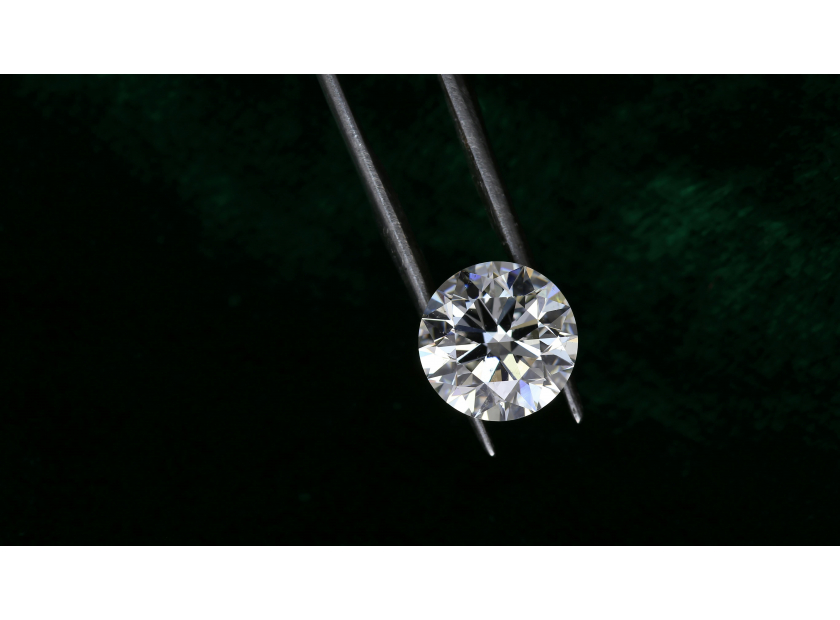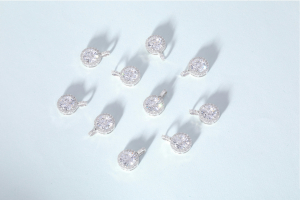USD
/
USD
/
Shipping to:
Currency:
When shopping for a diamond, whether it’s for an engagement ring or a piece of jewelry to mark a special occasion, you’re likely to encounter two main types: natural diamonds and synthetic diamonds.
With advances in technology, synthetic diamonds have become more common, leading to confusion for many buyers. So, what exactly sets these two apart, and how do you decide which one is right for you? Let’s break it down.
What Are Natural Diamonds?
Natural diamonds are formed deep within the Earth over billions of years, shaped by intense heat and pressure. They are mined from various parts of the world, with countries like Botswana, Russia, and Canada being key sources. The process of mining these precious stones is labor-intensive, which contributes to their value and rarity.
These diamonds are valued not just for their beauty but for the incredible natural forces that created them. Each natural diamond tells a unique story, making it a timeless symbol of love and commitment.
If you're looking to add an elegant diamond piece to your collection, check out our diamond pendants and necklaces for timeless designs.
What Are Synthetic Diamonds?
Synthetic diamonds, also known as lab-grown or lab-created diamonds, are grown in laboratories using advanced technology. These diamonds have the same physical, chemical, and optical properties as natural diamonds. The two main processes for creating synthetic diamonds are Chemical Vapor Deposition (CVD) and High Pressure High Temperature (HPHT).
If you’re curious to explore lab-grown options, check out lab-grown diamonds to discover stunning alternatives that don’t compromise on quality.
How to Identify Natural vs. Synthetic Diamonds
For the average person, telling the difference between natural and synthetic diamonds can be nearly impossible without specialized tools. Both types of diamonds have the same chemical composition and crystal structure, so they look identical to the naked eye.
However, there are ways professionals can tell them apart. Natural diamonds often have tiny imperfections known as inclusions, while synthetic diamonds tend to have fewer or different types of inclusions. Specialized equipment, like spectroscopy tools, can also detect differences in how these diamonds reflect light.
If you’re looking for larger diamonds that offer both natural and lab-grown options, check out large diamond rings to find the perfect choice for you.
Price Comparison: Are Synthetic Diamonds More Affordable?
One of the biggest differences between natural and synthetic diamonds is the price. Lab-grown diamonds are generally 30-40% cheaper than their natural counterparts, making them an attractive option for buyers on a budget. This affordability is due to the controlled environment in which they’re created.
There’s no need for expensive mining operations, and the supply of lab-grown diamonds is much more flexible. As a result, synthetic diamonds offer an excellent opportunity to get a larger or higher-quality diamond for the same price you’d pay for a smaller natural diamond.
For instance, a couple shopping for an engagement ring might find that with their budget, they can afford a 1.5-carat lab-grown diamond with a higher clarity grade, as opposed to a 1-carat natural diamond with lower clarity.
For many, this can make lab-grown diamonds the more appealing choice.
Take a look at our stunning collection of engagement rings for both natural and lab-grown diamonds.
Environmental and Ethical Considerations
Natural diamonds have a reputation for being tied to environmental concerns and unethical mining practices. The term “blood diamonds” refers to diamonds mined in war zones and sold to finance conflict. While efforts have been made to eliminate these unethical practices through initiatives like the Kimberley Process, it’s not always foolproof.
On the other hand, lab-grown diamonds are marketed as being more sustainable and conflict-free. Because they’re created in controlled environments, they don’t require mining, which reduces their environmental impact. Additionally, lab-grown diamonds don’t come with the risk of human rights violations that can sometimes be associated with natural diamond mining.
For consumers concerned about sustainability and ethics, synthetic diamonds are an attractive option. One buyer shared how her decision to purchase a lab-grown diamond engagement ring was influenced by her desire to make an environmentally conscious choice. For her, knowing that no one was harmed in the process made the ring even more meaningful.
If you’re passionate about sustainability and ethics, you might also explore our wedding bands that pair beautifully with any engagement ring.
Resale Value: Which Diamond Holds More Worth?
When it comes to resale value, natural diamonds typically hold their worth better than synthetic diamonds. This is partly due to their rarity and the market’s perception of them as more valuable. Natural diamonds, particularly those with unique characteristics or from famous sources, can appreciate in value over time.
Lab-grown diamonds, on the other hand, generally depreciate more quickly. As the technology improves and production becomes more efficient, the price of synthetic diamonds continues to drop.
While they’re still beautiful and durable, they don’t have the same investment potential as natural diamonds. However, it’s important to note that most diamonds, regardless of origin, don’t retain their full retail value once they’ve been purchased.
Diamonds are often seen as a symbol of love and commitment rather than a financial investment.
For those looking for timeless elegance, consider our collection of eternity rings, symbolizing never-ending love and commitment.
The Future of the Diamond Industry
The diamond industry is evolving. As synthetic diamonds become more widely accepted, we’re likely to see an increase in their market share. Many jewelers now offer both natural and lab-grown diamonds, giving customers more choices. Some predict that synthetic diamonds will continue to rise in popularity, especially among younger, more environmentally conscious buyers.
However, natural diamonds will always hold a special place in the market due to their history and unique origin story. One jeweler shared how their clientele has shifted in recent years, with more customers specifically requesting lab-grown diamonds.
As awareness grows about the ethical and environmental impacts of diamond mining, this trend is expected to continue.
FAQs
Is a synthetic diamond a "real" diamond?
Yes, synthetic diamonds are “real” diamonds in the sense that they have the same chemical and physical properties as natural diamonds.
The only difference is that they’re created in a lab rather than formed in the Earth.
How long do synthetic diamonds last compared to natural diamonds?
Both synthetic and natural diamonds are incredibly durable and will last a lifetime with proper care.
They are composed of the same material, so their longevity is identical.
Are synthetic diamonds detectable to the naked eye?
No, synthetic diamonds look identical to natural diamonds to the naked eye.
It requires specialized tools and testing to determine whether a diamond is lab-grown or natural.
Conclusion: Making the Right Choice for You
Choosing between a natural and synthetic diamond comes down to your personal values, budget, and what matters most to you. Natural diamonds offer a timeless connection to the Earth, while synthetic diamonds provide an ethical, environmentally friendly, and more affordable option. Ultimately, the “right” choice is the one that feels right for you.








